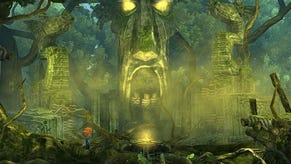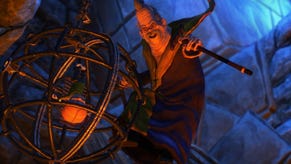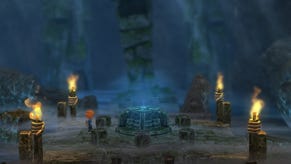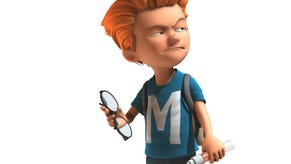Max: The Curse of Brotherhood review
My brother's keeper.
As a generation of video game designers enters its 30s and 40s and, in many cases, takes on the responsibilities of parenthood, themes of custody and paternity begin to feature more regularly in games. In the last couple of years, Telltale's The Walking Dead, Naughty Dog's The Last of Us and Irrational's Bioshock Infinite have each investigated the male custodian's role in a fallen world, asking us to assume the role of father figures protecting younger girls. Max: The Curse of Brotherhood - a resolutely traditional platform game with a resolutely traditional business model and, as such, an anomaly in the Xbox One's early catalogue - is another game based on family dynamics. It shifts the angle slightly with an investigation of the love/hate feelings so often experienced by young siblings toward one another - conflicting yet conjoined emotions that will be familiar to any parent with young children.
The game opens as Max arrives home to find his younger brother, Felix, playing with his beloved toys. Enraged, Max searches the internet for advice on how to rid himself of his troublesome brother and happens upon a spell to spirit Felix away, which he recites. A portal opens in the bedroom and the younger boy is snatched away by some nether-fiend. Realising the appalling mistake he's made and driven by a primal horror to rescue an imperilled loved one, Max dives after his brother and begins the winding and creative rescue operation.
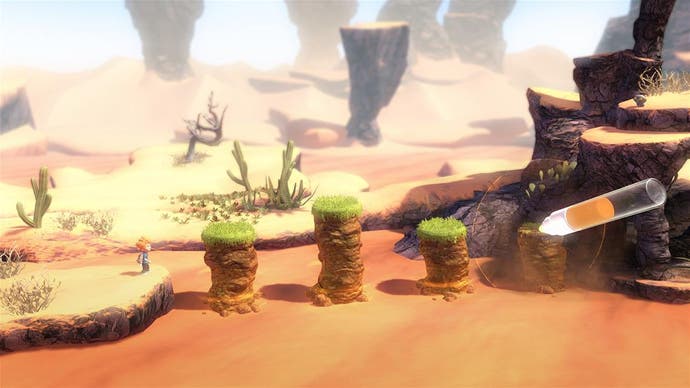
So the fable's moral is delivered in the first few minutes: you might regret wishing misfortunes on the ones you love. There is no subsequent development; the rescue goal is straightforward and unwavering. Texture comes instead from a parade of increasingly spectacular puzzles and the small, expanding clutch of tools Max must use to overcome them, each squeezed from the nib of a magic marker pen.
At first, you're able to call forth pillars of earth to create essential platforms or barriers. In time you can use the pen to cause branches to sprout from cliff-tops, or to draw vines from ceilings, which can be used to swing upon. Later you conjure fierce spouts of water used to cool lava or propel Max over gaps and, in the game's final act, your pen gains the ability to shoot fireballs that knock down enemies or break down weak objects. You do not have free use of your pen to scrawl useful pillars and platforms wherever you please, though. You can only use the pen where the designers designate, using a swirling vortex on the landscape. The pen's effect is also predestined in each instance: here you may place a water spout, there a vine and so on.
The prescription of these interactions initially seems overbearing and dull. Max leaps from left to right across the levels (each of which is set on a two-dimensional plane), pausing at some wide gap in order to raise a new platform before progressing. It's painting by numbers. But ingenuity is introduced later, when the pen's various effects must be combined. You might need to draw a branch in the form of a circle so, when it's lopped from the tree, it rolls down the hill to provide a useful ledge. Or maybe you have to draw a vine in a wide arc, attaching it to a pillar in order to create a zip-line. By the game's latter stages, each new screen reveals a fascinating puzzle involving various elements - the design is strong and fully explores the potential of its interlocking ideas.
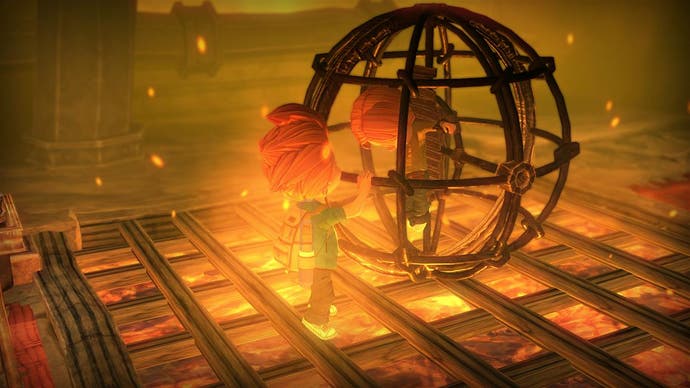
Throughout each stage there are two types of collectables: swivelling eyes (a sort of fantasy CCTV system used by the game's antagonist to spy on the world) that must be plucked from the scenery and destroyed, and the glittering fragments of a valuable artefact. Finding these items adds incentive to explore each area, and also offers some of the most ingenious design in the game.
Built in Unity, Max: The Curse of Brotherhood lacks the arresting visual style of, say, Limbo - a game that, beneath its shadow aesthetic, has a similar feel and structure. It's a handsome game, painting its deserts and forests in bright, appealing colours, but the children's storybook style is too conservative to draw the attention that the game's underlying strengths deserve. It's well paced too, breaking up the cerebral challenges with quick sprints across the landscape reminiscent of an auto-runner, in which you must leap obstacles and, occasionally, draw in vines and branches to save Max from a fall while the game temporarily drops into slow motion. With generous checkpoints, each tiny set-piece must only be cleared once.
There is, however, occasional frustration derived from Max's mildly imprecise controls. He floats through the air in lazy, Sackboy arcs, and struggles to hoist himself up some of the more convoluted branch shapes that you scrawl with your pen. Sometimes you'll be forced to throw Max to his death in order to restart a puzzle. But there is no denying the sense of accomplishment when you solve a puzzle, arranging the branches, vines and spouts of water in the correct way and then successfully manoeuvring Max across them and safely into the next screen. It's a game that makes you feel smart and, unlike Limbo, never surprises you with unforeseeable traps: there is always an opportunity to stand back, assess and, finally, execute. It's a somewhat short, enjoyable and inoffensive game that delivers on the potential of its mechanical promise, if not its narrative premise.


